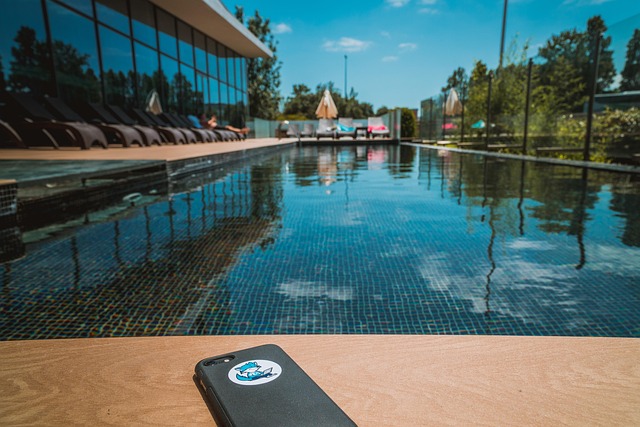Introduction
Digital detox breaks—the very phrase might make you roll your eyes or groan at the thought of stepping away from your phone. Trust me, I’ve been there. At first, my heart raced, notifications buzzed in the background of my mind, and I felt… anxious. But then, something amazing happened. After just a few short tech-free moments, my head cleared, my mood lifted, and I realized I’d tapped into a simple, powerful tool for everyday calm.
In this post, we’ll explore why digital detox breaks can initially feel uncomfortable (that “terrible” part) and why, with a few friendly tips, they’ll soon become your secret weapon for feeling refreshed, focused, and genuinely happier.
What Are Digital Detox Breaks—and Why Do They Feel Terrible at First?
At its core, digital detox breaks are short, intentional pauses from screens and devices. Whether it’s a five-minute phone-free walk or a half-hour social media hiatus, these micro-moments give your brain a rest from constant digital input.
Why the initial discomfort?
- Notification Addiction:
Our brains release dopamine whenever we see a new alert. Put the phone away, and suddenly you’re craving that hit—like a sugar withdrawal. - FOMO (Fear of Missing Out):
What if someone texts me? What if I miss an important update? That buzzing anxiety is real. - Habit Loops:
We’re wired to check devices reflexively—waiting rooms, queues, even bathroom breaks become screen time.
But here’s the kicker: that initial unease is exactly what makes digital detox breaks so transformative. It shows you how dependent you’ve become—and sets the stage for real change.
The Upside of Digital Detox Breaks—Feeling Amazingly Refreshed

Once you push past the first wave of discomfort, the benefits roll in quickly:
- Mental Clarity:
No more scattered thoughts or half-finished ideas. A clear headspace lets you think more creatively and solve problems faster. - Reduced Stress:
Stepping away from the “always on” rush lowers your cortisol levels. Suddenly, you feel calmer—even after just five minutes. - Improved Focus:
Without constant pings and pop-ups, you can dive deeply into tasks, finish them faster, and enjoy a sense of accomplishment. - Better Relationships:
When you’re not glued to a screen, you can give people around you genuine attention. Eye contact, real laughter, and meaningful conversation follow. - Enhanced Well‑being:
Screen breaks often lead to natural movement—stretching, walking, or simply looking around—which increases blood flow and reduces tension.
Common Myths About Digital Detox Breaks

Before we dive into practical tips, let’s debunk a few misconceptions:
Myth 1: You Need a Full Weekend Offline
Reality: Even 2-minute digital detox breaks count. Micro-moments are powerful.
Myth 2: Detox Means Total Isolation
Reality: You’re not cutting off social connection—you’re choosing when and how to engage.
Myth 3: It’s Only for Tech Addicts
Reality: Anyone using a smartphone, laptop, or tablet can benefit. That’s pretty much all of us!
You can know full detail by reading this article Digital Detox: Myth or Miracle.
7 Friendly Ways to Make Digital Detox Breaks Work for You

Here are seven simple strategies to ease into—and love—digital detox breaks:
1. The “Phone in the Drawer” Five-Minute Pause
- How it works: Place your phone face-down in a drawer before starting work or a meeting. Set a timer for five minutes.
- Why it helps: Out of sight, out of mind—plus a clear end point removes guilt.
2. Screen-Free Stretch Sessions
- How it works: Every hour, stand up and stretch for two minutes—no phone in hand.
- Why it helps: You reset your posture, give your eyes a break, and reset your mental focus.
3. Tech-Free Tea/Coffee Ritual
- How it works: When you brew your next cup, step away from screens entirely. Sip mindfully, noticing aroma, warmth, and taste.
- Why it helps: Transforms a routine caffeine fix into a mini mindfulness practice.
4. Post-Notification “Wait” Rule
- How it works: When a notification lands, wait two minutes before checking it. Take three deep breaths in the meantime.
- Why it helps: You break the reflex loop and reduce stress.
5. Morning “First 10” Exercise
- How it works: For the first 10 minutes after waking, avoid screens. Instead, stretch, journal, or simply breathe.
- Why it helps: Sets a calm tone for the day and prevents reactive scrolling.
6. Walking Meetings (No Screens Allowed)
- How it works: Whenever possible, turn a sit‑down discussion into a walk. Phones stay in pockets.
- Why it helps: Physical movement stimulates creative thinking and builds rapport.
7. Evening Wind‑Down Window
- How it works: One hour before bed, go screen-free. Read a physical book, chat with family, or meditate.
- Why it helps: Promotes natural melatonin production for better sleep.
Overcoming Resistance—Tips for Beginners
If you’re thinking, “This sounds great, but I’ll never stick to it,” try these friendly tweaks:
- Start Small: Commit to one two‑minute detox break per day. Build from there.
- Use a Physical Reminder: Place a sticky note on your monitor: “Digital Detox Now.”
- Accountability Buddy: Team up with a friend. Send each other a thumbs‑up emoji when you complete your detox break.
- Celebrate Wins: Notice the small benefits—better mood, sharper focus—and give yourself a mental “well done!”
H2: Question & Answer Series
Q: I feel anxious when my phone is out of sight. Is that normal?
A: Totally. It’s your brain craving the dopamine hit from notifications. With practice, that buzz fades and you’ll feel calmer during breaks.
Q: What if I miss an urgent message?
A: Use “Do Not Disturb” settings that allow calls from specific contacts. That way, true emergencies still reach you.
Q: Can I combine digital detox breaks with other habits?
A: Yes! Pair them with hydration, stretching, or gratitude moments for a hybrid micro‑wellness practice.
Frequently Asked Questions (FAQs)
- How often should I take digital detox breaks?
Aim for 3–5 mini-breaks daily—roughly every 1–2 hours. - Do I need to go completely offline?
No—just step away from screens. You can still listen to music or audiobooks. - Is there a “best time” for detox breaks?
Notice when you feel most foggy—mid-afternoon slump is perfect for a 5‑minute pause. - Will this really improve my productivity?
Yes. Numerous studies link short, mindful breaks with increased efficiency and creativity. - How long until I feel benefits?
Many people notice a mood lift and clearer thinking after the first break. Lasting change appears with consistent practice.
Conclusion & Call to Action
Digital detox breaks might feel uncomfortable the first few times—but remember, that discomfort is a sign you’re breaking free from autopilot. As you embrace these small, intentional pauses, you’ll find your mind calmer, your focus sharper, and your days more enjoyable.
Your next steps:
- Pick one of the seven detox techniques above.
- Try it today—yes, right now!
- Notice how you feel.
- Share your experience in the comments below—I read every message!
- Subscribe to CalmWithinMinutes.com for weekly micro‑wellness tips delivered straight to your inbox.
Here’s to feeling less tethered and more energized—one digital detox break at a time!

Pingback: Why Mindful Productivity Can Feel Frustrating (Yet Incredibly Rewarding) - Calm Within Minutes
Pingback: Focus Intervals: Why Taking Short Pauses Feels Aggravating And Amazingly Empowering - Calm Within Minutes